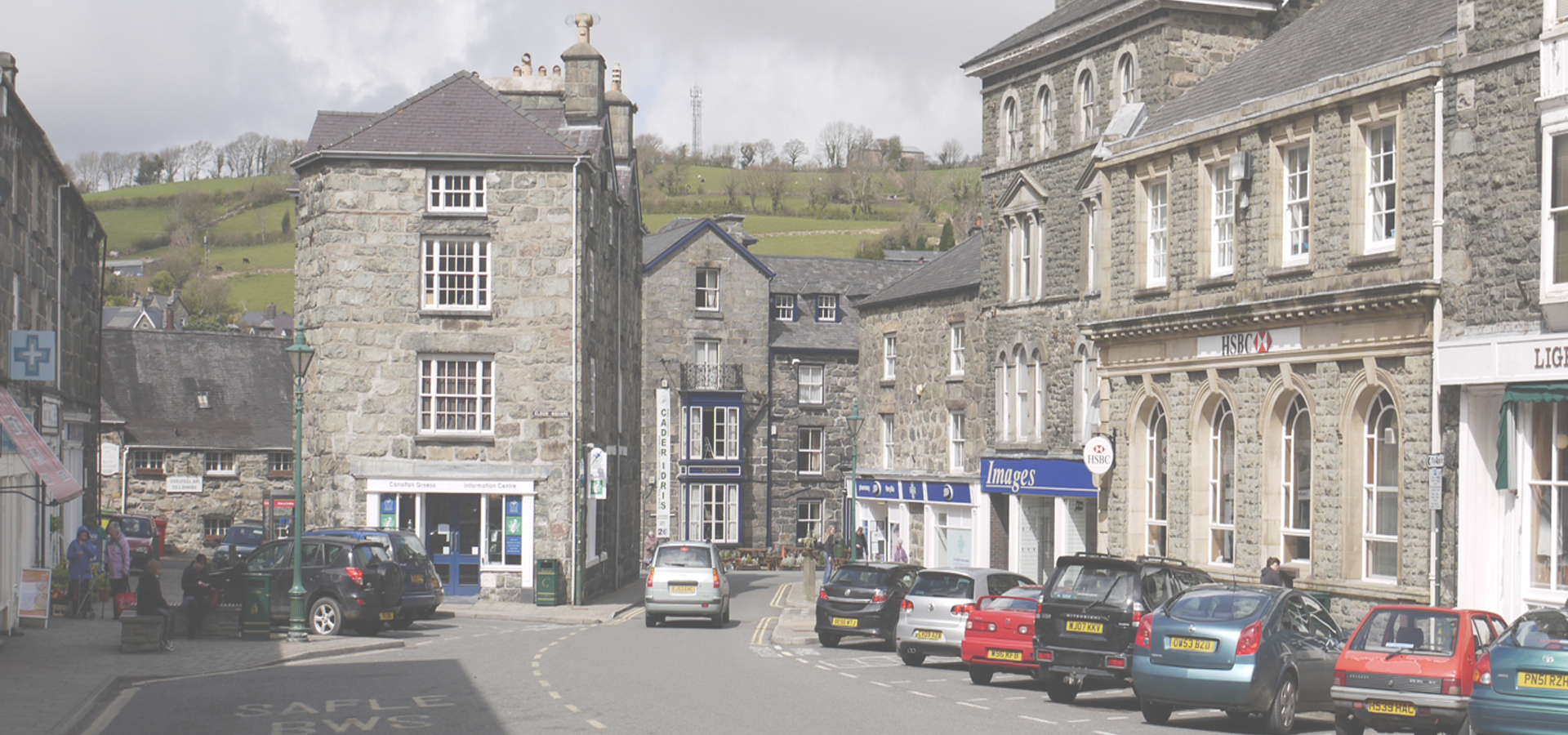🏴 Architect Walter Robert Fitzgibbon Fisher is associated with Dolgellau. He was elected a Fellow of the Royal Institute of British Architects (FRIBA) in 1939.
Dolgellau, Gwynedd, Wales, United Kingdom
🏴 Dolgellau; formerly Dolgell(e) y) is a town and community in Gwynedd, north-west Wales, lying on the River Wnion, a tributary of the River Mawddach. It is traditionally the county town of the historic county of Merionethshire, which lost its administrative status when Gwynedd was created in 1974. Dolgellau is the main base for climbers of Cadair Idris. Although very small, it is the second largest settlement in Southern Gwynedd. The community includes Penmaenpool.
History and economy The site of Dolgellau was, in the pre-Roman Celtic period, part of the tribal lands of the Ordovices, who were conquered by the Romans in AD 77–78. Although a few Roman coins from the reigns of Emperors Hadrian and Trajan have been found near Dolgellau, the area is marshy and there is no evidence that it was settled during the Roman period. There are, however, three hill forts in the vicinity of Dolgellau, of uncertain origin.
After the Romans left, the area came under the control of a series of Welsh chieftains, although Dolgellau was probably not inhabited until the late 11th or 12th century, when it was established as a "serf village" (or maerdref), possibly by Cadwgan ap Bleddyn. It remained a serf village until the reign of Henry VII (1485–1509).
A church was built in the 12th century (demolished and replaced by the present building in 1716), although Cymer Abbey, founded in 1198 in nearby Llanelltyd, remained the most important religious centre locally. Dolgellau gained in importance from this period onwards, and was mentioned in the Survey of Merioneth ordered by Edward I (Llanelltyd was not). In 1404 it was the location of a council of chiefs under Owain Glyndŵr.
After a visit by George Fox in 1657, many inhabitants of Dolgellau converted to Quakerism. Persecution led a large number of them to emigrate to Pennsylvania in 1686, under the leadership of Rowland Ellis, a local gentleman-farmer. The Pennsylvanian town of Bryn Mawr, home to a prestigious women's liberal arts college, is named after Ellis's farm near Dolgellau.
The woollen industry was long of the greatest importance to the town's economy; by the end of the 18th century, output was reckoned to be worth £50,000 to £100,000 annually. The industry declined in the first half of the 19th century, owing to the introduction of mechanical looms. Another important contributor to the local economy was tanning, which continued into the 1980s in Dolgellau, though on a much reduced scale.
The town was the centre of a minor gold rush in the 19th century. At one time the local gold mines employed over 500 workers. Clogau St. David's mine in Bontddu and Gwynfynydd mine in Ganllwyd have supplied gold for many royal weddings.
Dolgellau was the county town of Merionethshire (Welsh: Meirionydd, Sir Feirionnydd) until 1974 when, following the Local Government Act of 1972, it became the administrative centre of Meirionnydd, a district of the county of Gwynedd. This was abolished in 1996 by the Local Government (Wales) Act 1994.
Today, the economy of Dolgellau relies chiefly on tourism (see below), although agriculture still plays a role; a farmers' market is held in the town centre on the third Sunday of every month.
It is believed that Dolgellau Cricket Club, founded in 1869 by Frederick Temple, is one of the oldest cricket clubs in Wales.
For nearly a century Dolgellau was the home of Dr Williams School, a pioneering girls' secondary school. This was funded from the legacy of Daniel Williams the Welsh nonconformist of the 17th/18th century.
Shortly before the closure of the town's railway station it displayed signs reading variously Dolgelly, Dolgelley and Dolgellau.
Dolgellau, Gwynedd, Wales, United Kingdom

-
Walter Robert Fitzgibbon Fisher |
-
Clough Williams-Ellis |
🏴 🏴 Architect Clough Williams-Ellis is associated with Dolgellau. He was an active supporter of the National Trust, and the Council for the Protection of Rural England.
🇵🇱 Inowrocław 52.788
🏴 Burton-on-Trent 52.783
🇵🇱 Bielsk Podlaski 52.774
🏴 Swadlincote 52.772
🏴 Loughborough 52.769
🏴 Melton Mowbray 52.766
🏴 Kings Lynn 52.757
🇨🇮 Port-Bouet -3.9
🇪🇸 Las Rozas de Madrid -3.873
🇪🇸 Boadilla del Monte -3.867
🇪🇸 Majadahonda -3.867
🏴 Port Talbot -3.827
🇪🇸 Ciudad Real -3.917
🏴 North Lanarkshire -3.922
🇲🇦 Al Hoceima -3.936
🏴 Motherwell -3.985
🇨🇮 Treichville -4.014
Locations Near: Dolgellau -3.9134,52.7991
🏴 Aberystwyth -4.085,52.416 d: 44.2
🏴 Bangor -4.128,53.228 d: 49.8
🏴 Conwy -3.83,53.281 d: 53.8
🏴 Colwyn Bay -3.7,53.29 d: 56.4
🏴 Newtown -3.316,52.514 d: 51.3
🏴 Llandrindod Wells -3.381,52.241 d: 71.7
🏴 Mold -3.146,53.171 d: 66
:0: Flintshire -3.142,53.168 d: 65.9
Antipodal to: Dolgellau 176.087,-52.799
🇳🇿 Dunedin 170.474,-45.884 d: 19145.9
🇳🇿 Christchurch 172.617,-43.517 d: 18951.7
🇳🇿 Invercargill 168.373,-46.413 d: 19114.4
🇳🇿 Canterbury 171.58,-43.543 d: 18933.5
🇳🇿 Queenstown 168.658,-45.033 d: 18996.3
🇳🇿 Wellington 174.767,-41.283 d: 18730.7
🇳🇿 Hutt 174.917,-41.217 d: 18724.2
🇳🇿 Lower Hutt 174.917,-41.217 d: 18724.2
🇳🇿 Upper Hutt 175.05,-41.133 d: 18715.6
